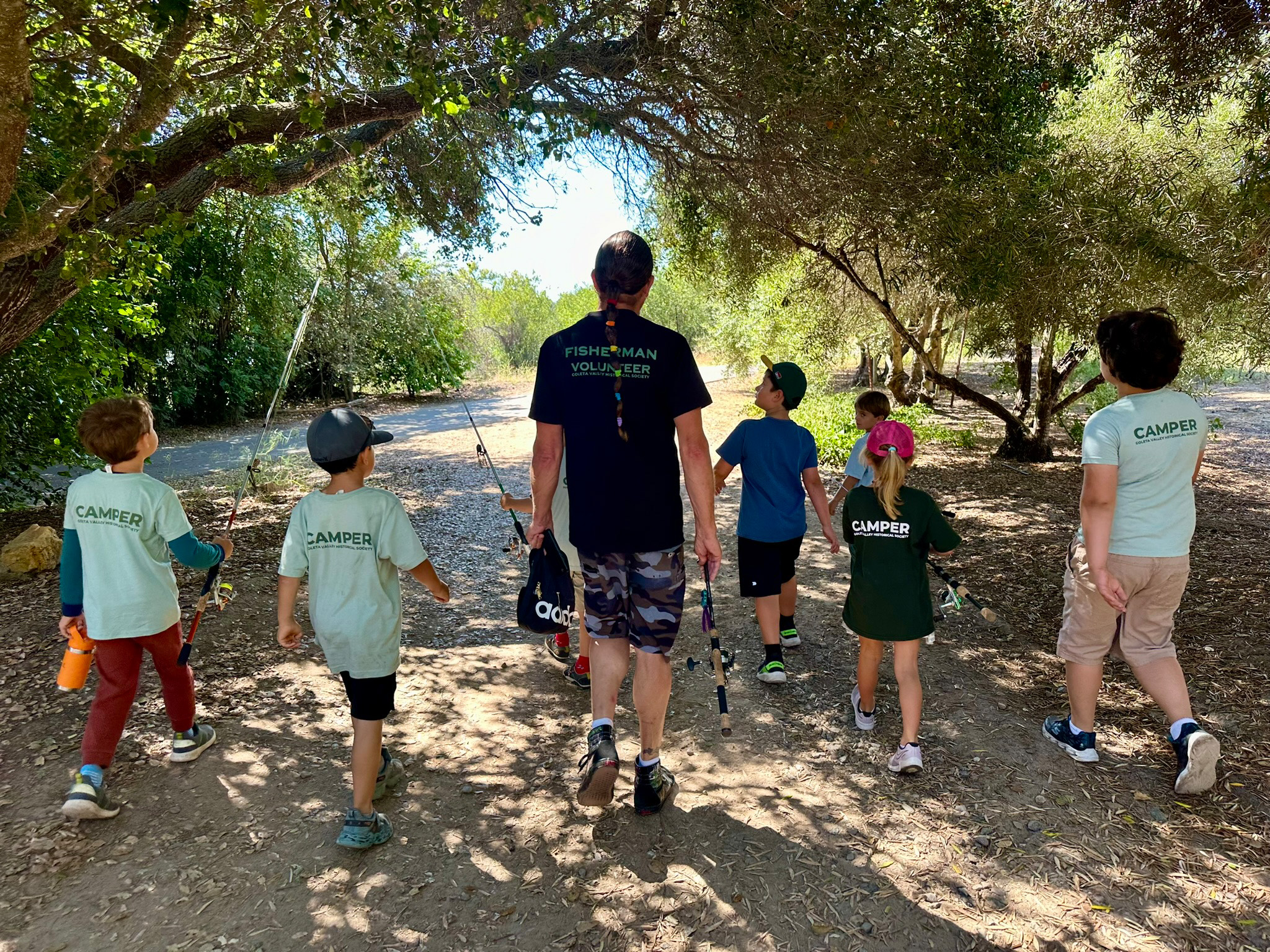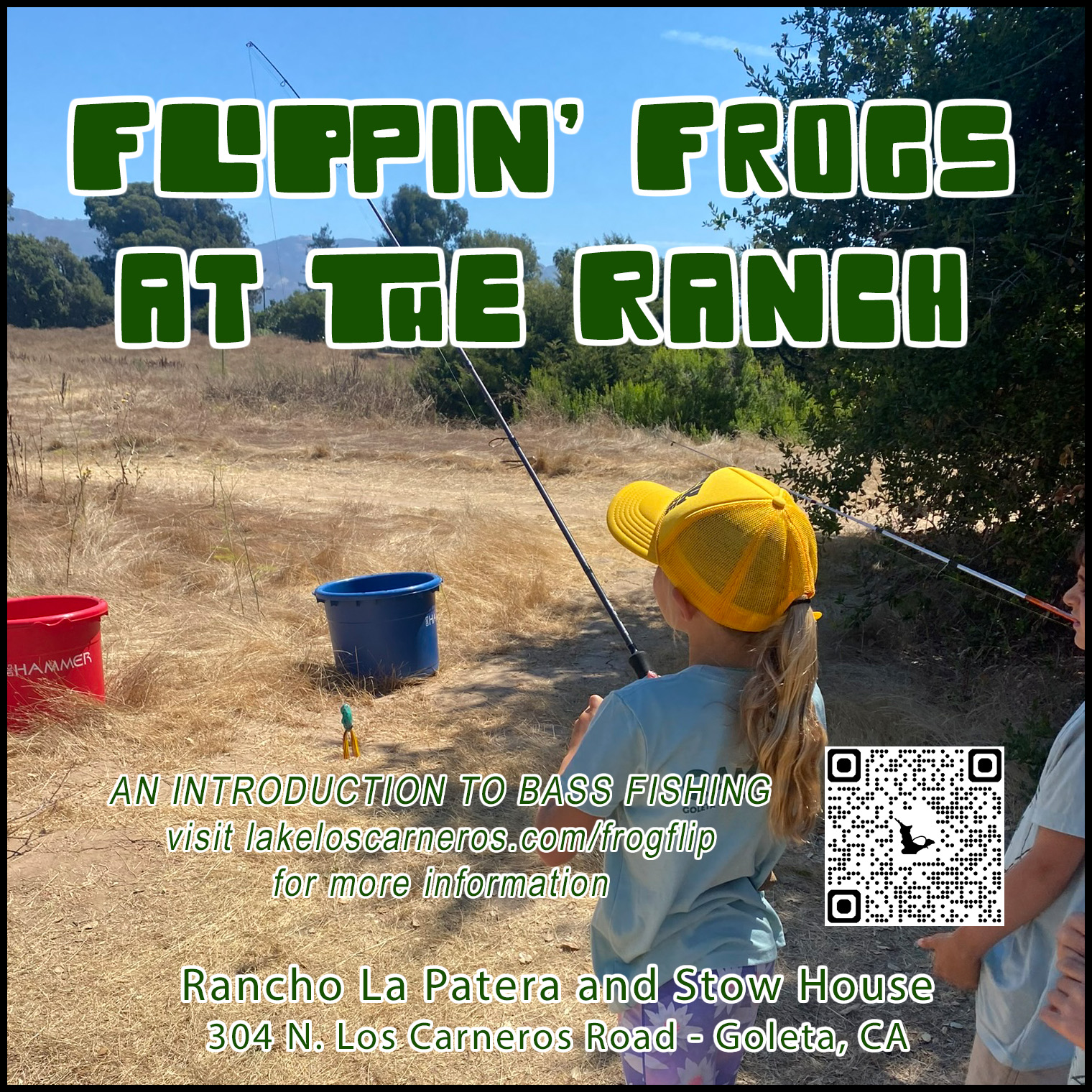
I want to thank everyone who came to the first frog flipping competition at Rancho La Patera and Stow House.
During the 2024 Camp Stow Summer Camp. I taught the campers a little about bass fishing, how to use a spinning rod, and how to flip. On September 1, 2024 during Sundays at the Ranch campers were invited back to compete for fishing related prizes and 2024 Lemon Festival Certificates and show off their skills.
Thank you to Tackle Warehouse, Okuma Fishing Tackle, Keleka Ana, Santa Barbara Landing, Western Outdoor News, Big Hammer Lures, Andrew Masaitis, Debbie Wolf, The Santa Barbara South Coast Chamber of Commerce, The City of Goleta, Rancho La Patera and Stow House, and The Goleta Historical Society.
Current Frog Flipping Rules and additional information below.
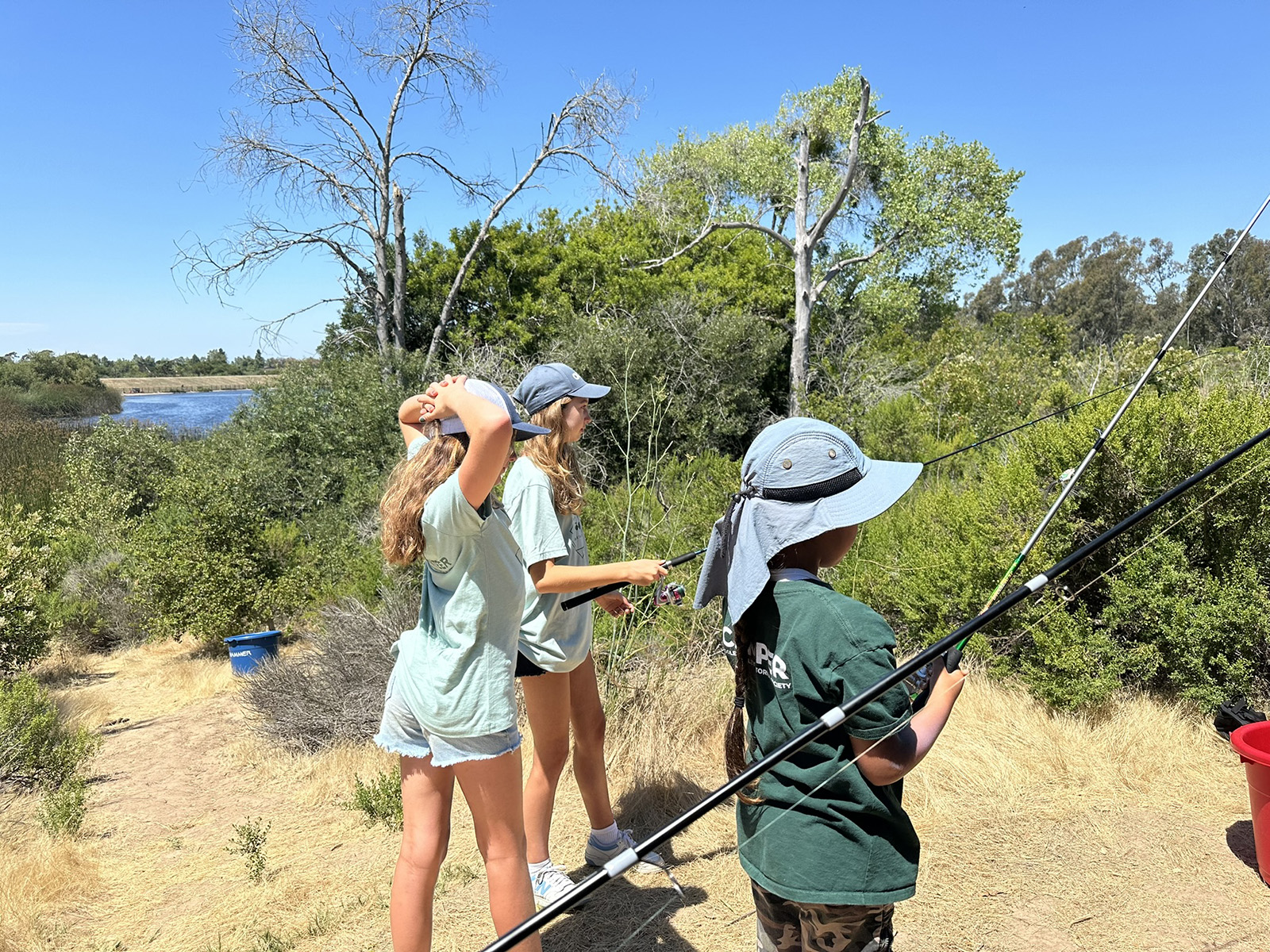
Game Play and Rules
3 buckets are placed at distances of 20 feet , 30 feet and 40 feet from the foot fault line*.
Furthest bucket is worth 3 points, middle bucket 2 points, closest bucket 1 point.
Players take turns flipping the frogs into the buckets. Up to three flips per turn (turn ends on scoring flip and/or third flip).
Additional points: If you are successful in flipping the frog into the middle or furthest bucket you can try to "hop" the frog from that bucket into one of the closer buckets to earn additional points for a possible total of 6 points per turn. Once the frog touches the ground your turn is over.
Hoping the frog from one bucket to a closer one creates slack (loose) line which can create tangles if player tries to retrieve frog before straightening out the line. If the line gets tangled and the frog can not be retrieved your turn is over.
First person to reach 8 points wins.
*Foot fault line distances are based on assessed skill levels of the Camp Stow kids after a couple of days of practice. Current suggested adjustments based on skill level.
Kids 5 and under: 10 ft closer
Kids 9 and under: 5 ft closer
Experienced Anglers: 10 ft further
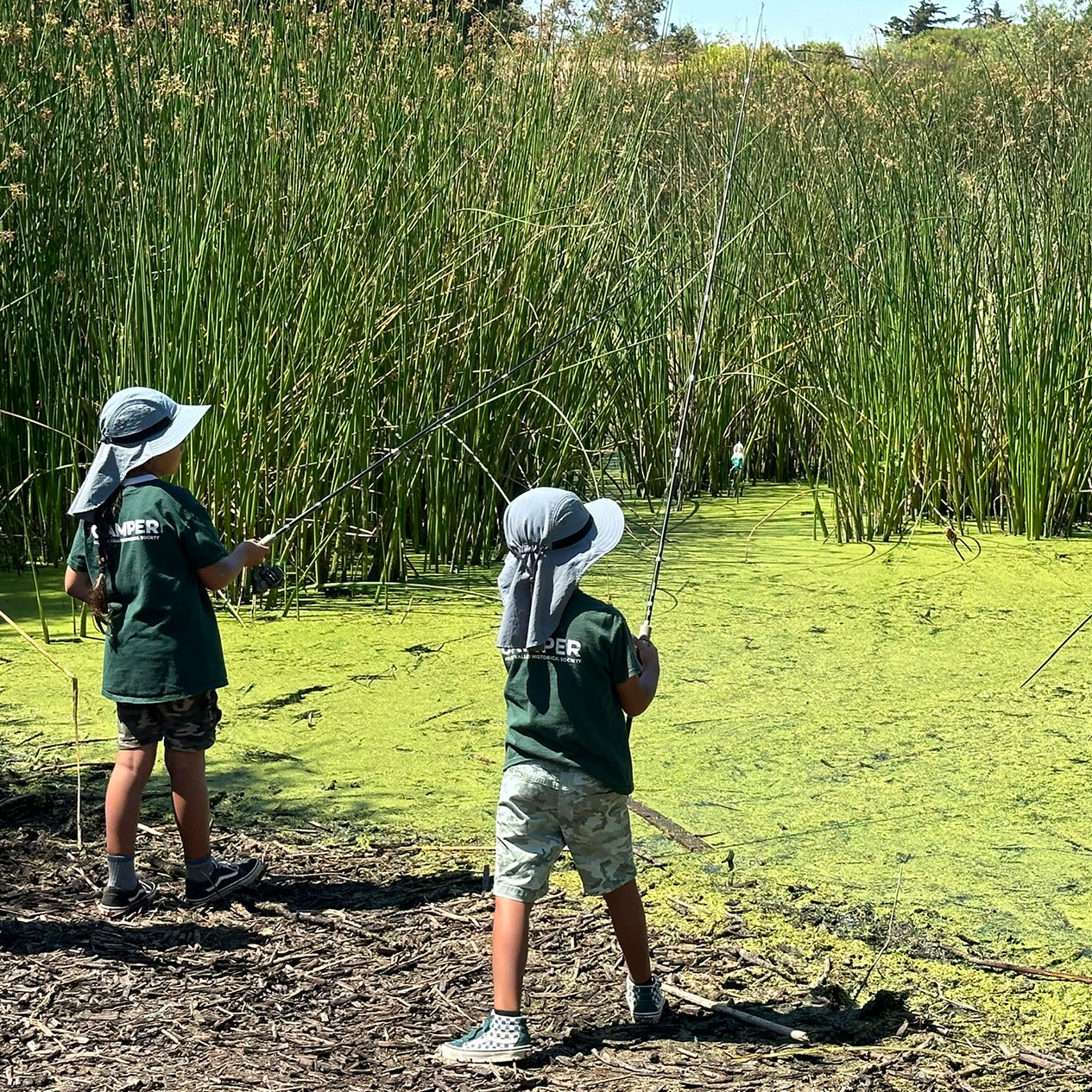
Practice at Home
Any 5 to 7 ft. medium-ish action spinning combo will work. The reel shouldn't be too big as it will be too heavy and cause fatigue. A reel that holds ~100 yards of 6 to 8 pound monofilament line should work fine.
Fill the reel with 20 to 30 pound braided line. Tie the frog straight to the braid (no leader). I suggest using a palomar knot. Make sure the anti-reverse switch is on and the drag is not set too tight or loose.
To reduce the chance of injury I suggest grinding the hooks down past where the barb used to be or cutting the point off and smashing down the barb. See photo below.
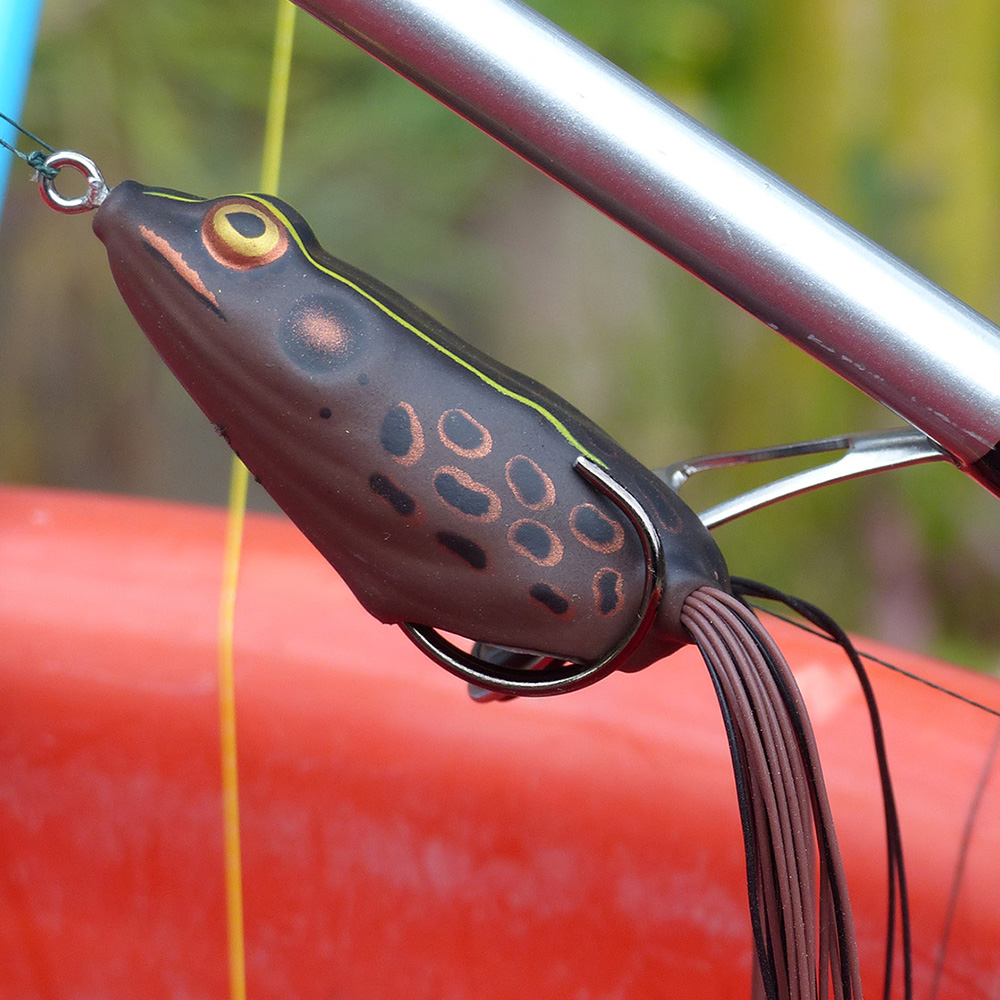
HOW TO USE A SPINNING ROD & AVOIDING TANGLES
Hold the rod so that the reel seat is between the ring finger and pinky finger of your right hand. With a relaxed shoulder hold the rod at elbow height with the tip up at about a 30 degree angle.
Holding the reel end of the rod too high is not necessary and will cause fatigue. Holding the tip up too high will cause the line to get tangled around the tip of the rod.
Start with the frog hanging about 2 to 3 feet from the tip of the rod. As you become more comfortable you will find what works best for you for the flip you want to make.
***3 STEPS BEFORE FLIPPING***
1) Rotate bail so that line roller is up - closest to the rod/handle
2) Grab the line with the tip of your right index finger and hold it against the handle of the rod (or rod depending on the type of handle)
3) Flip the bail over
Now you are ready to flip - Slowly get the frog to swing back and forth. Use the bend of the rod to do most of the work. The tip should go down slightly as the frog is in the middle of the swing. The tip should straighten out as the frog is on the ends of the swing. At the right time release the line you are holding with your right index finger so that the frog flies into the bucket you were aiming for.
***3 STEPS AFTER FLIPPING***
1) Flip the bail back over
2) Put the line on the line roller if it isn't already and pull the line slightly toward the tip of the rod to get rid of slack/loose line around/near the reel
3) Lift the rod tip slowly until all of the slack/loose line between the reel and the frog is gone
Once there is no slack/loose line between the reel and the frog you can reel it in and try again.

Teach Them To Cast - Leave No Trace
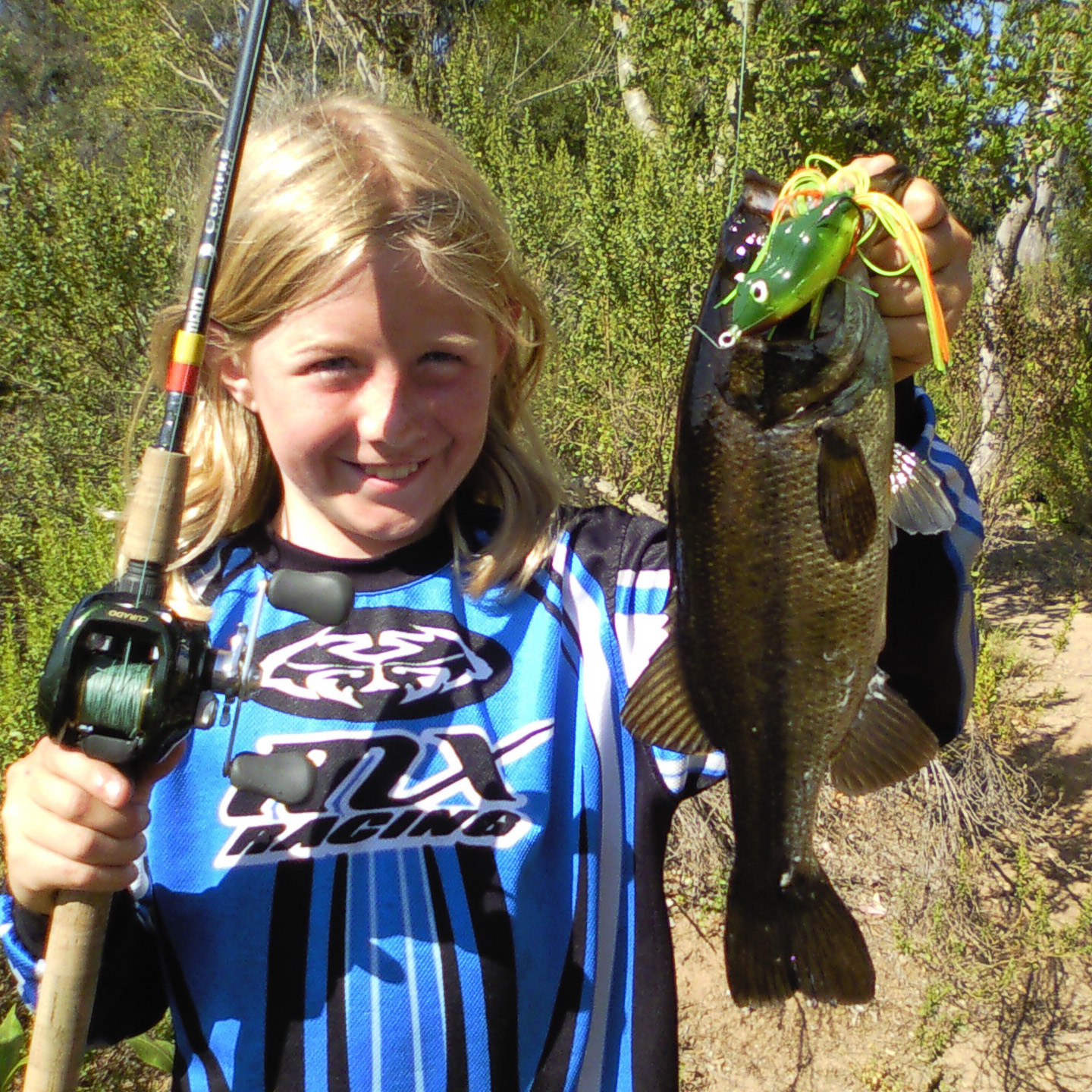
Please visit my website: lakeloscarneros.com/fishing - Thank you!
